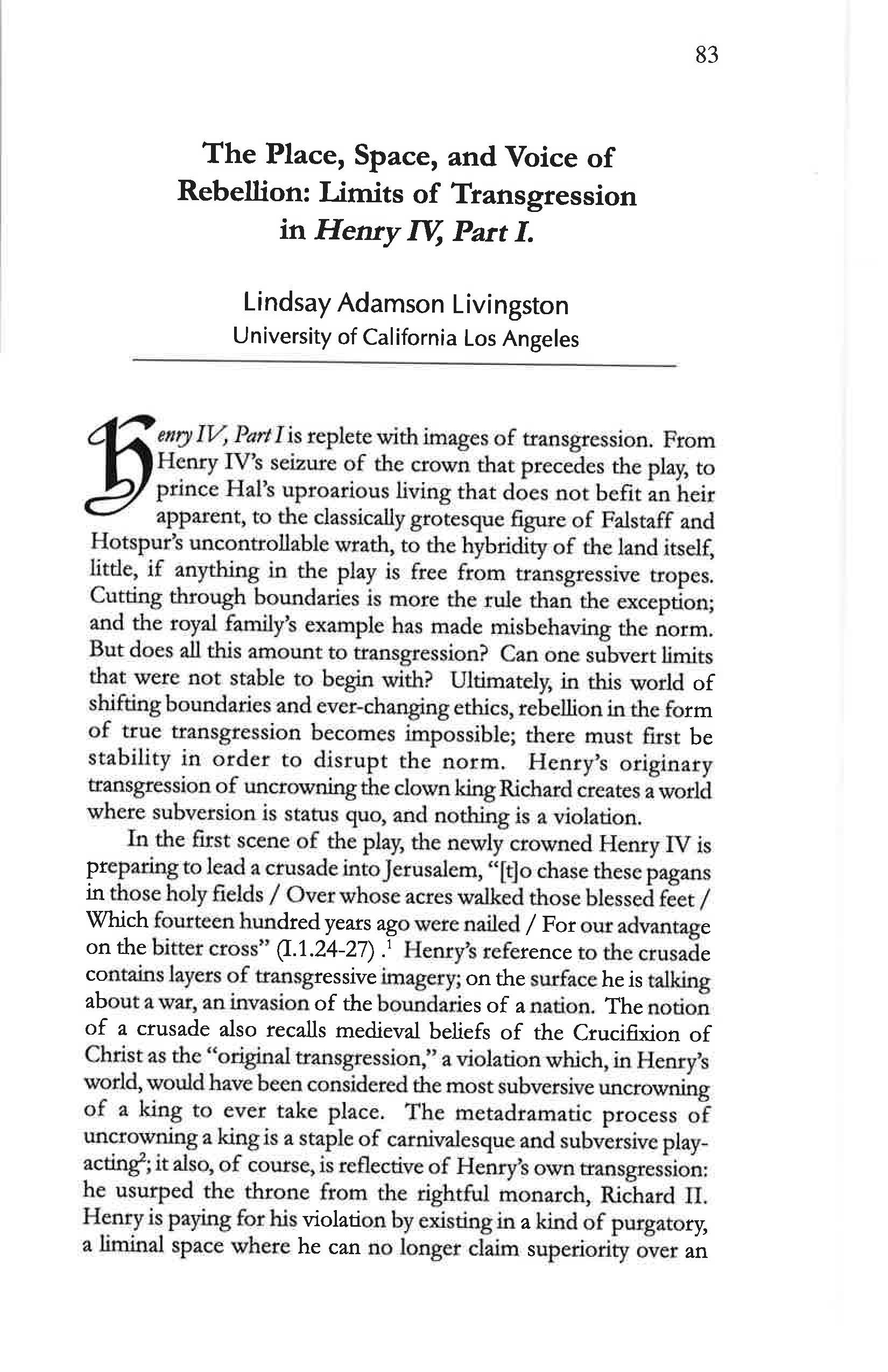The Place, Space, and Voice of Rebellion: Limits of Transgression in Henry IV, Part I.
Main Article Content
Abstract
Henry IV, Part I is replete with images of transgression. From Henry IV’s seizure of the crown that precedes the play, to prince Hal’s uproarious living that does not befit an heir apparent, to the classically grotesque figure of Falstaff and Hotspur’s uncontrollable wrath, to the hybridity of the land itself, little, if anything in the play is free from transgressive tropes. Cutting through boundaries is more the rule than the exception; and the royal family’s example has made misbehaving the norm. But does all this amount to transgression? Can one subvert limits that were not stable to begin with? Ultimately, in this world of shifting boundaries and ever-changing ethics, rebellion in the form of true transgression becomes impossible; there must first be stability in order to disrupt the norm. Henry’s originary transgression of uncrowning the clown king Richard creates a world where subversion is status quo, and nothing is a violation.
